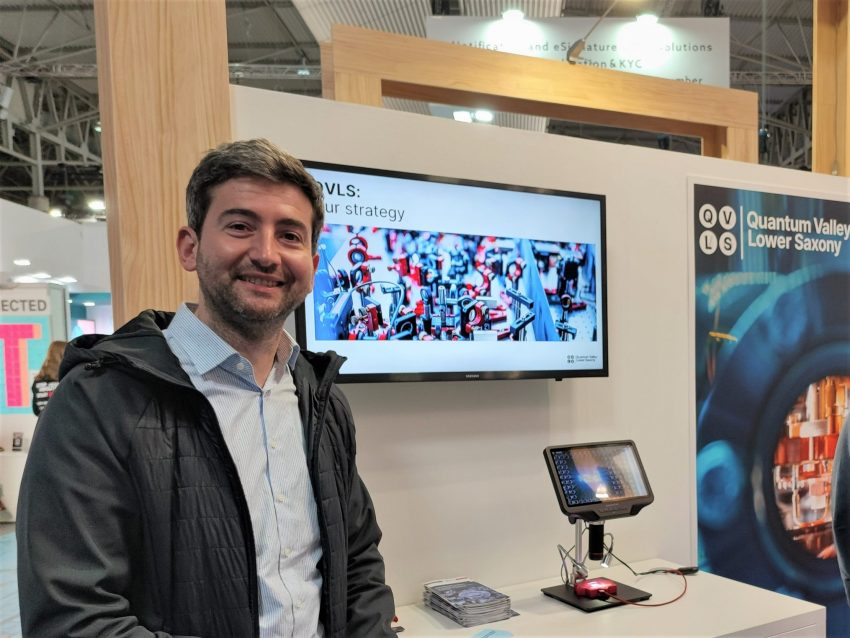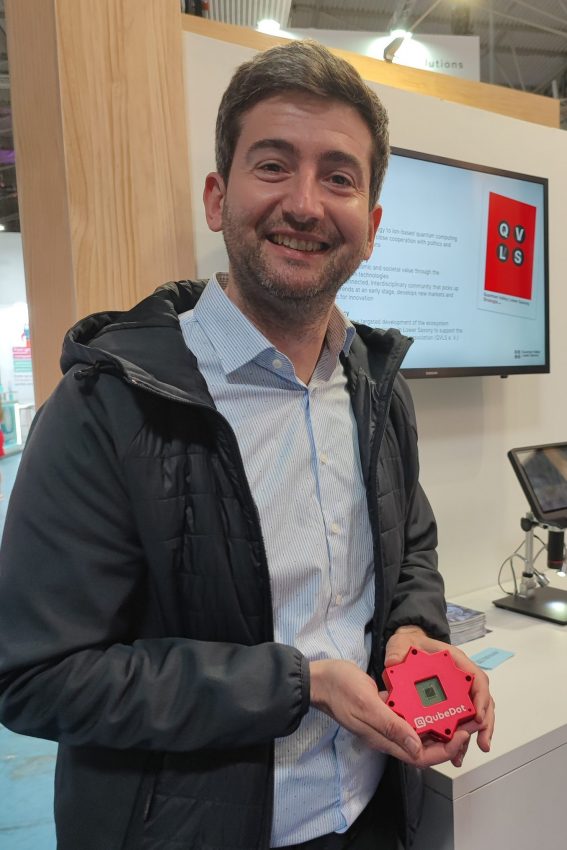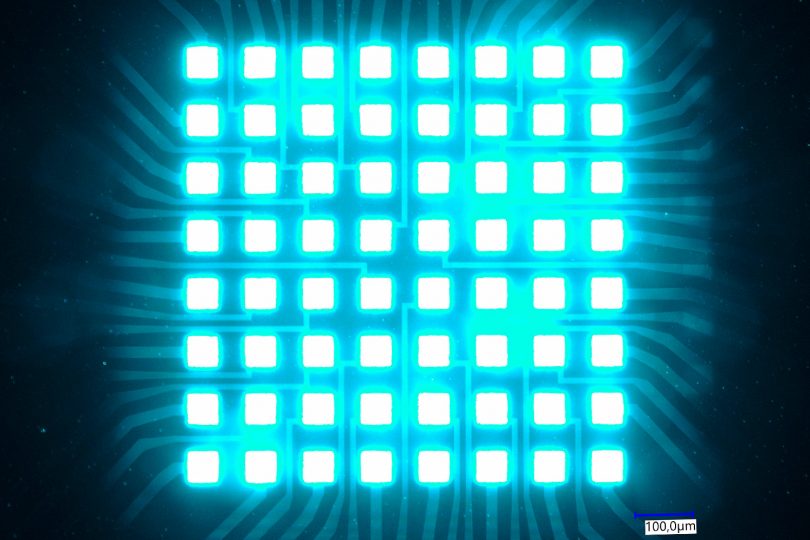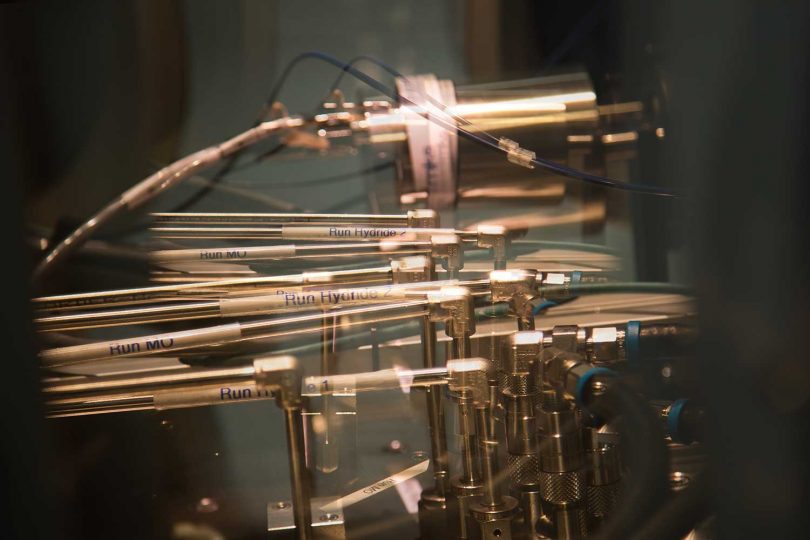The Barcelona-Braunschweig LED-connection Interview with Professor Daniel Prades from the University of Barcelona
In 2020 the EU-Project SMILE started to bring forth a new generation of MicroLED technology. While Professor Daniel Prades from the University of Barcelona leads the joint project, his connection to TU Braunschweig roots far deeper. The participation of the Quantum Valley Lower Saxony (QVLS) at the Mobile World Congress in Barcelona gave us a chance to meet Daniel Prades in person and ask him about his cooperation with TU Braunschweig.
Professor Prades, how did your connection to TU Braunschweig come about?
It goes as far back as my time as a PhD student. I met Martin Hoffmann back then, a researcher at the University of Cologne. He moved to Braunschweig in the middle of his PhD and I followed him to continue the joint work. At TU Braunschweig we met Professor Andreas Waag from the Institute of Semiconductor Technology. During that time, we started using light to develop better sensors. Also the initiative for the Laboratory for Emerging Nanometrology (LENA) at TU Braunschweig started to grow. Since then I continued working with Andreas Waag and we are developing new ideas together.
One of the more daring thoughts was to build a microscope out of LED arrays by blinking one LED after the other. With this idea, we created the project Chipscope in 2017. A colleague of mine from Barcelona, Professor Angel Dieguez, coordinated Chipscope. He contributed his expertise in CMOS design and together we were able to design a microscope prototype until the end of the project in 2020.
What are you working on right now?
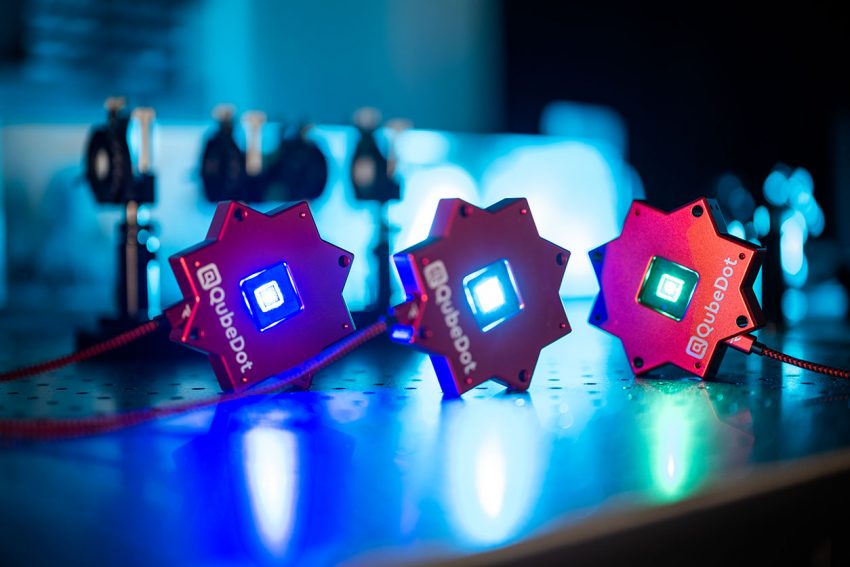
MicroLED arrays that have made it out of the lab and into applications. Picture credits: Jan Hosan/TU Braunschweig
Today, the story of Chipscope continues in SMILE, another EU project. During our joint research in Chipscope, we realized two things: Firstly, it will take a lot more effort to reach our goal to develop an unconditionally reliable LED-based microscope than we can summon in the project. Secondly, the technology of LED arrays is a vehicle that cannot only revolutionize microscopy but the sensing of almost everything. To unlock this potential, we shifted our angle in SMILE from “optimizing LED arrays for a microscope” to “making the technology generally accessible”.
Currently, we are improving the LED arrays on different parameters. On the one hand, we want to miniaturize the LEDs even further to be able to put more of them on one array. On the other hand, we aim to achieve more powerful and faster-blinking pixels. With those goals in mind, the integration of the LEDs on a chip becomes more and more challenging. Back in Chipscope, everything was somehow handmade: A chip here, a chip there and an awful lot of wires. Now all the different parts are coming together with the high integration of semiconductor technologies. Therefore, in the end it is just one chip. No wires. No add-ons. This will allow us in the future to scale up the number of pixels as desired.
SMILE puts together many tiny LEDs and lets them blink. Now what?
Well, if every partner of the project had tried to achieve this alone, they probably would have developed a single-purpose technology that is hardly transferable. With our collective expertise, we are able to map the entire production chain from developing the LED semiconductors in Braunschweig to the integration on silicon here in Barcelona. We also brought QubeDot into the project. The startup emerged from TU Braunschweig and now brings our arrays to companies and puts them into practice. With the feedback of our industry partners, we are aiming to adapt our SMILE arrays even more for different applications: from sensing bacteria or microplastics to optogenetics or even the task of making industrial processes more efficient.
Are there more collaborations coming up?
Yes, of course! What we have is the result of years of fruitful discussion and joint work. With time comes trust. And trust is a fertile ground for new projects. We get new ideas while drinking coffee or having dinner together. When the idea makes some sense, we build up a team and try to get some funding. While the last part is the hardest, we definitely have a lot of ideas.
The journey to the development of the LED microscope in Chipcope just branched out into many new possibilities that we want to explore together. For example: building laser LEDs for microscopes. Another example: We want to enhance gas sensors with LEDs. I already worked on gas sensors in my ERC starting grant with the semiconductors from Braunschweig. But since then we made a lot of progress. Soon it could be possible to combine LEDs with fluorescent substances for measuring chemicals that so far only very lavish methods can detect.
In addition, we want our respective students to profit from our cooperation. You can never start too early to form international relationships. Therefore, we are working on an ERASMUS agreement between the University of Barcelona and TU Braunschweig.

